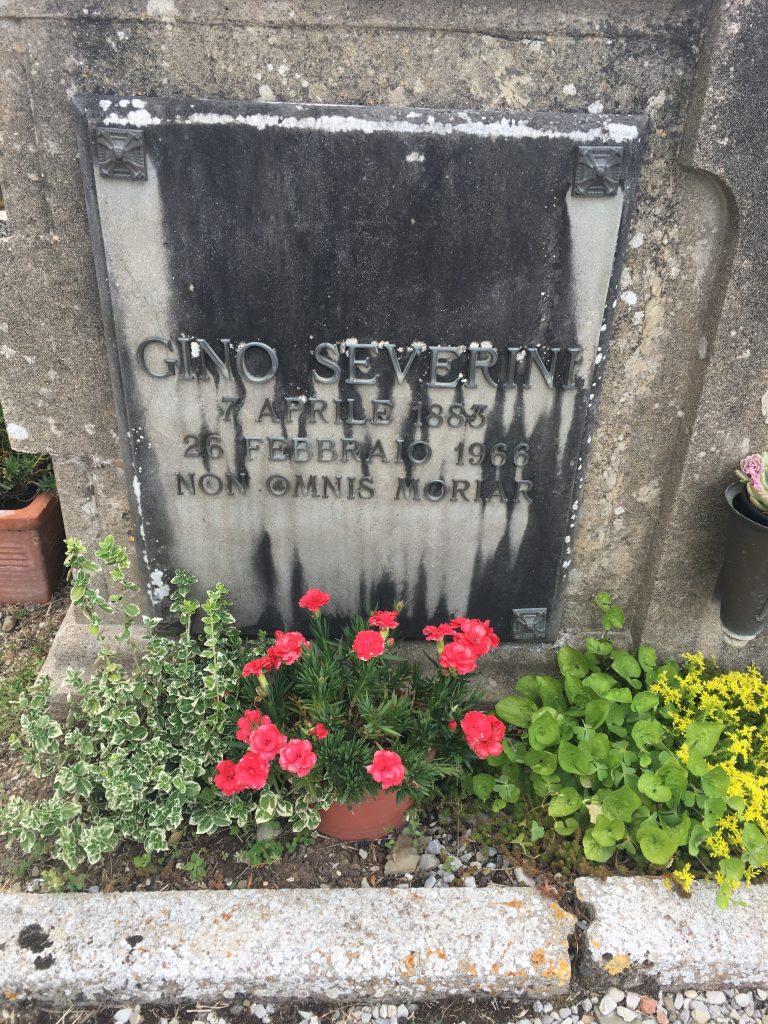While you are in Cortona attending the 2022 IAS/Kress Lecture in Italy, please consider visiting the following sites, as suggested by Jennifer Griffiths:
Etruscan/Roman Antiquity
Cortona’s Museo dell’Accademia Etrusco or MAEC will be a major highlight for any attendee, no matter their specialty. It is home to some remarkable Etruscan archaeological finds including the Tabula Cortonensis (200 BC), an ancient legal document brought to light in the 1990s, and the Lampadario (400 BC), a large elaborate Etruscan oil lamp that held sixteen wicks and constitutes a unique example of Etruscan bronze work.
Etruscologists and scholars of antiquity may also wish to plan a countryside walk as there are several Etruscan monuments dotted around the nearby hills. Budgeting approximately an hour, you can walk through the Porta Bifora of the original Etruscan fortifications and down through backroads and olive groves to see the Tanella di Pitagora and Tanella Angori, monumental remains of the late Etruscan and early Roman periods. Both are situated about 800 meters downhill from the central Piazza della Repubblica.
Medieval
Medievalists may wish to visit the mortal remains of Brother Elias (Elia Coppi), Saint Francis’s learned fellow and confidant, at the Basilica of Saint Francis. From there it is an uphill climb to the Basilica of Santa Margherita da Cortona along the Via Crucis to visit the body of Cortona’s “Second Magdalene.” The Diocesano Museum holds the earliest image of the saint, a dossal with nine scenes from her life. The bastions of the current Fortezza del Girifalco have existed at least since 500 BC. It was the stage of many medieval battles, particularly the wars with Arezzo, although its current appearance dates to the time of the Medici conquests. Its parapets are still intact and offer spectacular views of the Valdichiana and Lago Trasimeno.
From the Porta Santa Margherita, it is a 3km (35 min) walk to Le Celle, a beautiful, rural refuge nestled into the hills by a stream that was founded by Saint Francis in 1211 for prayer and meditation. It was expanded by Brother Elias in subsequent years with the construction of new cells and still functions as a peaceful monastic retreat for a small group of Franciscan friars.
Renaissance/Baroque
Cortona’s Diocesano Museum will be a major highlight for Renaissance specialists as it is home to significant works by Giovanni da Fiesole (Fra Beato Angelico) and Luca Signorelli. The museum gives pride of place to Fra Angelico’s so-called Cortona Triptych (Madonna and Child with John the Evangelist, John the Baptist, Mark, and Mary Magdalene 1436-37) and his Annunciation (1434), the most celebrated of his three known versions, which has been adopted as a cultural emblem for the town. Both works were originally made for the church of San Domenico. Despite the recent rise to fame of Lorenzo Cherubini (pop star Jovanotti), Luca Signorelli remains Cortona’s most illustrious son. His body was interred at the basilica of San Francesco, as noted by a small plaque near the entrance to the church. Along with other works by his school, Signorelli’s Deposition from the Cross (1502) and Communion of the Apostles (1512) are on display in the museum.
Walking uphill from the piazza della Repubblica along the Via Berrettini will bring you past the Casa Berrettini, birthplace of Baroque painter and architect Pietro da Cortona. Continuing to the top of the hill beyond Piazza della Pescaia you can find a gem off the beaten path. The small church of San Niccolò has a double-sided altarpiece painted by Luca Signorelli in about 1510, which has been mounted on an electric hinge mechanism. The recto features a Lamentation of the Dead Christ and the verso is a Madonna and Child with Saints Peter and Paul.
Modern
Physically born in Cortona, Gino Severini famously claimed to have been “intellectually and spiritually” born in Paris. The top floor of the Museo dell’Accademia Etrusco or MAEC has a newly renovated room dedicated to this avant-garde painter, designer, and mosaicist. On show in the room are a Divisionist work, La Bohémienne (1905) and his first painting of the so-called return-to-order period, Maternity (1916). Severini was one of the founding members of the Futurist movement and part of the Paris School, a city in which he befriended Modigliani, Picasso, and Apollinaire and met his beloved wife Jeanne Paul Fort, daughter of the Symbolist poet. In Maternity (1916) she cradles the couple’s infant daughter Gina in an intentional echo of a Renaissance Virgin and Child. “Fra Angelico is my champion of beauty,” he would write. Husband and wife were buried together (in the same sarcophagus) at the local Cimitero della misericordia, a ten-minute walk downhill from the museum.
Following the Second World War, Severini was invited by Bishop Giuseppe Franciolini to design a series of fourteen mosaics for the stations of the cross along Cortona’s Via Crucis, leading from Porta Berarda to Santa Margherita. The cartoons are on view at the Diocesano museum. Romualdo Mattia was responsible for translating these designs into the mosaics that were then installed in 1946. In 1966 Severini completed his series of religious works for Cortona with a large-scale mosaic for the façade of Saint Mark’s church, which sits at the beginning of the Via Santa Margherita and looks out over the valley.

Photo courtesy Jennifer Griffiths

Photo courtesy Jennifer Griffiths

Photo courtesy Jennifer Griffiths

1 thought on “Site Visits/Percorsi in Cortona, Italy”